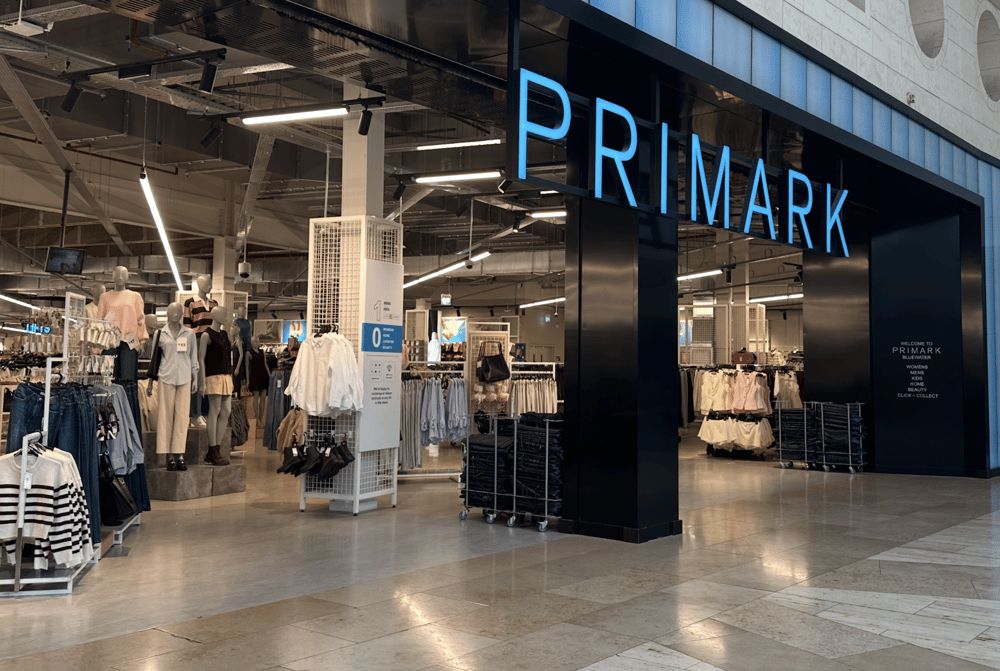Primark Navigates Mixed European Trade with Strong US and UK Growth Ahead of Middle East Expansion

Associated British Foods (ABF), the parent company of value-focused retailer Primark, has released its second-half trading update, revealing a mixed but generally positive picture. While Primark experienced significant improvement in the UK and a robust performance in the US, trading across Europe proved more challenging. This update comes as the division prepares for its inaugural franchise store openings in the Middle East next month, indicating its resilience amidst a tough economic climate.
ABF CEO George Weston noted that the period, which concludes on September 13th, was characterized by "a challenging environment, characterised by consumer caution, geopolitical uncertainty and inflation." Despite these headwinds, Primark anticipates an overall sales growth of approximately 1% for the half-year, a figure spread consistently across both the third and fourth quarters. However, like-for-like sales are projected to be around 2% below last year's figures for H2, with a 2.4% decline in Q3 and an estimated 2% decline in Q4. For the full 2025 financial year, Primark forecasts around 1% sales growth, driven primarily by its ongoing store rollout program, which is contributing approximately 4% to sales growth, offsetting the decline in like-for-like sales.
Regionally, the UK and Ireland demonstrated a strong sequential improvement compared to the first half. This positive trend is attributed to a compelling product offering, particularly in womenswear, increased digital engagement, and more favorable market conditions. Total H2 sales for the UK and Ireland are expected to grow by 1%, with Primark's UK market share rising from 6.6% to 6.8% according to Kantar. Strong Easter trading contributed to a 1% sales rise in Q3, and Q4 maintained this growth despite lapping double-digit increases from the prior year. Primark highlighted that while the UK clothing market declined, the rate was slower than H1, supported by good weather. The success of its Click & Collect service, now available in all 187 British stores, and strategic store estate management (including openings, relocations, and extensions) further bolstered performance. Excluding these estate changes, like-for-like sales in the UK and Ireland are expected to be nearly flat in H2, with a 0.7% decrease in Q3 and broadly flat in Q4.
Europe presented a more varied landscape. In Spain and Portugal, sales are expected to grow by approximately 2% in H2, with broadly flat sales in Q3 and a projected 3% growth in Q4, outperforming a weaker Spanish clothing market and benefiting from new store openings. Conversely, France and Italy are projected to see a sales decrease of around 4% in H2, reflecting a softer consumer environment, with 4% declines anticipated in both the third and fourth quarters. Central and Eastern Europe stood out with strong growth, expected to increase by around 9% in H2, propelled by recent store openings, including a robust 17% growth in Q3 and a projected 4% in Q4. Northern Europe faced declines, with sales expected to fall around 2% for the half, experiencing a 1% decline in Q3 and a projected 3% decline in Q4. However, despite softer sales in a weaker German market, recent restructuring of the store footprint in Germany and the Netherlands has led to significantly improved sales densities and profitability.
The US market emerged as a strong performer, with sales projected to be a remarkable 23% higher for H2, comprising 21% growth in Q3 and an estimated 24% growth in Q4. Primark's stores in the US traded exceptionally well, with its value proposition resonating strongly with customers. The company also made considerable progress with its space expansion program, opening four new stores in H2, including its first location in Tennessee, underscoring its commitment to growth in the region.
Looking ahead, Primark anticipates that the overall consumer environment will remain uncertain. Nevertheless, the adjusted operating profit margin for the full year is expected to be broadly in line with the previous year, a testament to Primark's robust operating model. While the adjusted operating margin in H2 will be below H1, primarily due to the phasing of one-off items that benefited the first half, the company has implemented focused cost optimization and efficiency savings. These initiatives have supported increased investment across product development, brand building, and digital strategies.
Store expansion continues to be a crucial growth driver. The second half of the year saw 15 new store openings across various regions: four in the US, three in Spain, two in Portugal, two in France, one in Italy, one in Romania, and two in the UK. Additionally, 22 stores underwent refits. In the Netherlands, one store was closed, and another was "right-sized" to optimize performance. A significant strategic move involves the expansion into the Middle East under a franchise agreement, with preparations well underway for the first store opening in Kuwait next month, followed by two stores in Dubai in early 2026. This move marks a new chapter for Primark's international growth strategy.










